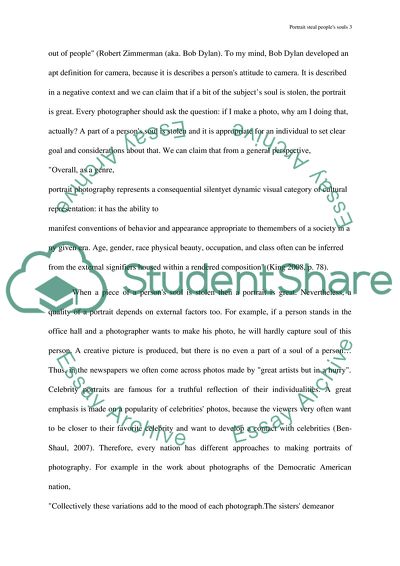Cite this document
(Is Portrait Photography Showing or Stealing People Souls Coursework, n.d.)
Is Portrait Photography Showing or Stealing People Souls Coursework. Retrieved from https://studentshare.org/visual-arts-film-studies/1793420-photography-does-portrait-photography-is-showing-or-stealing-people-souls
Is Portrait Photography Showing or Stealing People Souls Coursework. Retrieved from https://studentshare.org/visual-arts-film-studies/1793420-photography-does-portrait-photography-is-showing-or-stealing-people-souls
(Is Portrait Photography Showing or Stealing People Souls Coursework)
Is Portrait Photography Showing or Stealing People Souls Coursework. https://studentshare.org/visual-arts-film-studies/1793420-photography-does-portrait-photography-is-showing-or-stealing-people-souls.
Is Portrait Photography Showing or Stealing People Souls Coursework. https://studentshare.org/visual-arts-film-studies/1793420-photography-does-portrait-photography-is-showing-or-stealing-people-souls.
“Is Portrait Photography Showing or Stealing People Souls Coursework”. https://studentshare.org/visual-arts-film-studies/1793420-photography-does-portrait-photography-is-showing-or-stealing-people-souls.


